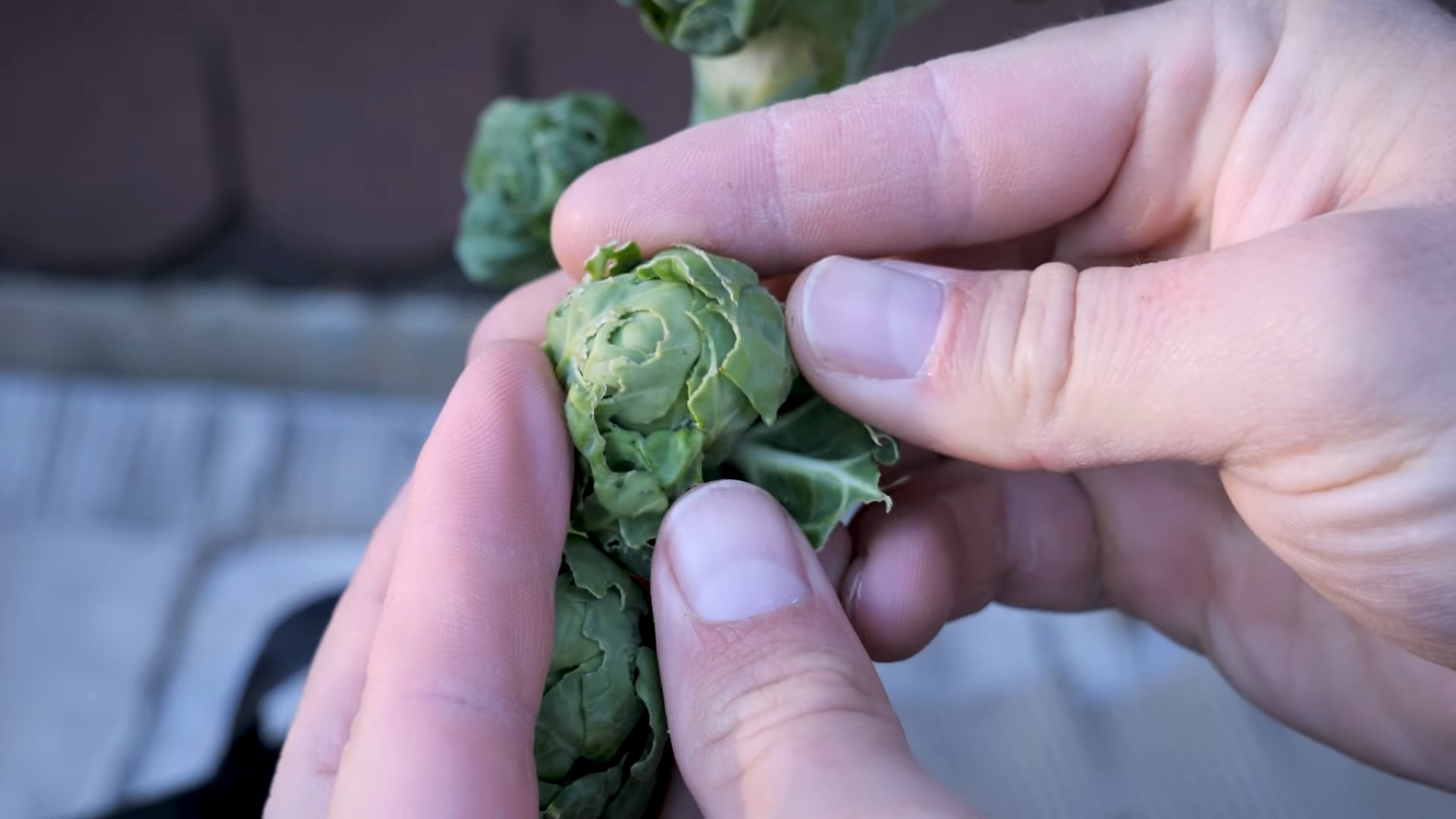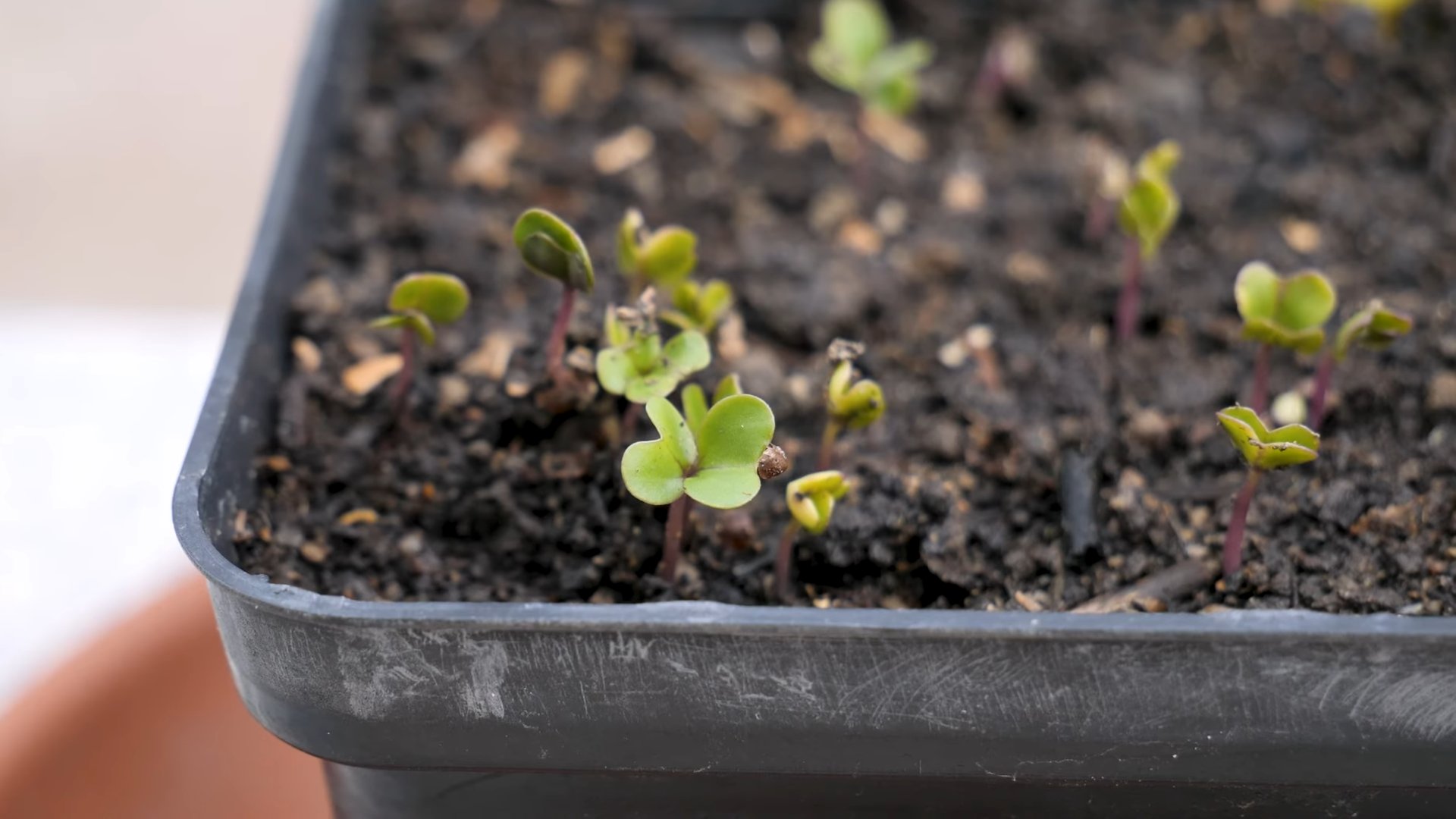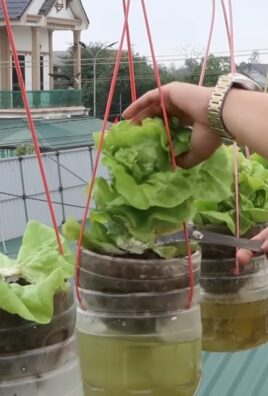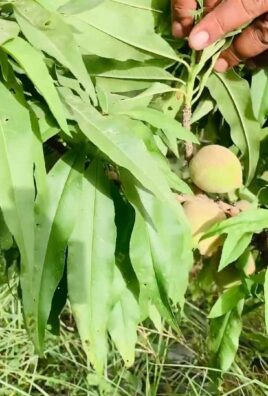Purple Bush Beans Container Gardening: Ever dreamt of harvesting vibrant, delicious purple beans right from your own patio? I know I have! There’s something incredibly satisfying about growing your own food, and it doesn’t require acres of land. In fact, with a few simple tricks, you can cultivate a thriving purple bush bean patch in containers, even if you’re short on space.
The history of bean cultivation stretches back millennia, with evidence suggesting they were a staple food in ancient civilizations across the globe. While purple varieties might not be as historically prominent as their green counterparts, their unique color adds a touch of whimsy and visual appeal to any garden. Beyond aesthetics, growing your own purple bush beans offers a fantastic way to control the quality of your food, ensuring it’s free from harmful pesticides and packed with nutrients. Plus, let’s be honest, who can resist the bragging rights of serving a dish featuring homegrown, vibrantly colored beans?
This DIY guide is your key to unlocking the secrets of successful purple bush beans container gardening. I’ll walk you through everything from selecting the right container and soil to providing optimal sunlight and water. Whether you’re a seasoned gardener or a complete beginner, these easy-to-follow tips and tricks will empower you to enjoy a bountiful harvest of delicious purple bush beans. So, grab your gardening gloves, and let’s get started!

Growing Purple Bush Beans in Containers: A Complete DIY Guide
Hey there, fellow gardening enthusiasts! I’m so excited to share my experience with growing purple bush beans in containers. It’s a surprisingly easy and rewarding project, even if you don’t have a sprawling backyard. Trust me, the vibrant purple pods are not only beautiful but also incredibly delicious. Let’s dive into how you can grow your own bountiful harvest of these beauties!
Choosing the Right Container and Soil
First things first, we need to set the stage for our purple bean adventure. The right container and soil are crucial for success.
* Container Size: Bush beans don’t need a ton of space, but they do need enough room for their roots to spread. I recommend a container that’s at least 12 inches in diameter and 12 inches deep. A larger container, like a 5-gallon bucket or a large planter, will give you even better results and allow you to plant more beans.
* Drainage: This is non-negotiable! Make sure your container has drainage holes. Beans hate sitting in soggy soil, which can lead to root rot. If your container doesn’t have holes, you can easily drill some.
* Soil: Forget garden soil! It’s too heavy and compacts easily in containers. Instead, opt for a high-quality potting mix. Look for a mix that’s lightweight, well-draining, and contains ingredients like peat moss, perlite, or vermiculite. I personally love using a mix specifically formulated for vegetables.
Planting Your Purple Bush Beans
Now for the fun part – getting those seeds in the ground!
1. Soaking the Seeds (Optional): While not strictly necessary, soaking your bean seeds in water for a few hours before planting can help speed up germination. Just put them in a bowl of water and let them soak for 2-4 hours. Don’t soak them for too long, or they might start to rot.
2. Filling the Container: Fill your container with the potting mix, leaving about an inch or two of space at the top.
3. Planting Depth: Plant the bean seeds about 1 inch deep.
4. Spacing: Space the seeds about 2-3 inches apart. If you’re using a larger container, you can plant more seeds, but make sure they have enough room to grow.
5. Watering: Gently water the soil until it’s evenly moist but not soggy.
6. Location: Place the container in a sunny spot that gets at least 6-8 hours of direct sunlight per day. This is crucial for healthy growth and a good harvest.
Caring for Your Purple Bush Beans
Once your beans are planted, it’s time to nurture them and watch them grow!
1. Watering: Keep the soil consistently moist, but avoid overwatering. Water when the top inch of soil feels dry to the touch. During hot weather, you might need to water more frequently.
2. Fertilizing: Bush beans are relatively light feeders, but they will benefit from regular fertilization. Use a balanced liquid fertilizer, diluted to half strength, every 2-3 weeks. Look for a fertilizer with an NPK ratio (nitrogen, phosphorus, potassium) of around 10-10-10 or 5-10-5.
3. Support (Optional): Bush beans typically don’t need support, but if your plants start to get leggy or fall over, you can provide some support with small stakes or a tomato cage.
4. Pest Control: Keep an eye out for common bean pests like aphids, bean beetles, and spider mites. You can usually control these pests with insecticidal soap or neem oil. I prefer to use organic pest control methods whenever possible.
5. Weeding: Remove any weeds that pop up in your container. Weeds compete with your bean plants for nutrients and water.
Harvesting Your Purple Bush Beans
This is the moment we’ve all been waiting for – harvesting those beautiful purple beans!
1. Timing: Bush beans are typically ready to harvest about 50-60 days after planting. The pods should be firm, plump, and about 4-6 inches long.
2. Harvesting Technique: Gently snap the beans off the plant, being careful not to damage the stems.
3. Frequency: Harvest your beans regularly, every few days, to encourage the plant to produce more pods. Overripe beans can become tough and stringy.
4. Enjoying Your Harvest: Purple bush beans are delicious steamed, sautéed, or added to salads. They’re also a great source of vitamins and fiber.
Troubleshooting Common Problems
Even with the best care, you might encounter some challenges along the way. Here are a few common problems and how to address them:
* Yellowing Leaves: This could be a sign of overwatering, underwatering, or nutrient deficiency. Check the soil moisture and adjust your watering accordingly. If the soil is consistently moist, you might be overwatering. If the soil is dry, you need to water more frequently. You can also try fertilizing with a balanced fertilizer.
* Lack of Flowers or Pods: This could be due to insufficient sunlight, poor pollination, or nutrient deficiency. Make sure your plants are getting enough sunlight. You can also try hand-pollinating the flowers by gently shaking the plant or using a small paintbrush to transfer pollen from one flower to another. Fertilizing with a fertilizer that’s high in phosphorus can also help.
* Pest Infestations: As mentioned earlier, keep an eye out for common bean pests and treat them with insecticidal soap or neem oil.
* Root Rot: This is caused by overwatering and poor drainage. Make sure your container has drainage holes and avoid overwatering. If you suspect root rot, you can try transplanting your beans into a fresh container with well-draining soil.
Choosing Your Purple Bush Bean Variety
There are several varieties of purple bush beans to choose from, each with its own unique characteristics. Here are a few popular options:
* Royal Burgundy: This is a classic variety known for its deep purple pods and excellent flavor. It’s also relatively early-maturing.
Hey there, fellow gardening enthusiasts! I’m so excited to share my experience with growing purple bush beans in containers. It’s a surprisingly easy and rewarding project, even if you don’t have a sprawling backyard. Trust me, the vibrant purple pods are not only beautiful but also incredibly delicious. Let’s dive into how you can grow your own bountiful harvest of these beauties!
Choosing the Right Container and Soil
First things first, we need to set the stage for our purple bean adventure. The right container and soil are crucial for success.
* Container Size: Bush beans don’t need a ton of space, but they do need enough room for their roots to spread. I recommend a container that’s at least 12 inches in diameter and 12 inches deep. A larger container, like a 5-gallon bucket or a large planter, will give you even better results and allow you to plant more beans.
* Drainage: This is non-negotiable! Make sure your container has drainage holes. Beans hate sitting in soggy soil, which can lead to root rot. If your container doesn’t have holes, you can easily drill some.
* Soil: Forget garden soil! It’s too heavy and compacts easily in containers. Instead, opt for a high-quality potting mix. Look for a mix that’s lightweight, well-draining, and contains ingredients like peat moss, perlite, or vermiculite. I personally love using a mix specifically formulated for vegetables.
Planting Your Purple Bush Beans
Now for the fun part – getting those seeds in the ground!
1. Soaking the Seeds (Optional): While not strictly necessary, soaking your bean seeds in water for a few hours before planting can help speed up germination. Just put them in a bowl of water and let them soak for 2-4 hours. Don’t soak them for too long, or they might start to rot.
2. Filling the Container: Fill your container with the potting mix, leaving about an inch or two of space at the top.
3. Planting Depth: Plant the bean seeds about 1 inch deep.
4. Spacing: Space the seeds about 2-3 inches apart. If you’re using a larger container, you can plant more seeds, but make sure they have enough room to grow.
5. Watering: Gently water the soil until it’s evenly moist but not soggy.
6. Location: Place the container in a sunny spot that gets at least 6-8 hours of direct sunlight per day. This is crucial for healthy growth and a good harvest.
Caring for Your Purple Bush Beans
Once your beans are planted, it’s time to nurture them and watch them grow!
1. Watering: Keep the soil consistently moist, but avoid overwatering. Water when the top inch of soil feels dry to the touch. During hot weather, you might need to water more frequently.
2. Fertilizing: Bush beans are relatively light feeders, but they will benefit from regular fertilization. Use a balanced liquid fertilizer, diluted to half strength, every 2-3 weeks. Look for a fertilizer with an NPK ratio (nitrogen, phosphorus, potassium) of around 10-10-10 or 5-10-5.
3. Support (Optional): Bush beans typically don’t need support, but if your plants start to get leggy or fall over, you can provide some support with small stakes or a tomato cage.
4. Pest Control: Keep an eye out for common bean pests like aphids, bean beetles, and spider mites. You can usually control these pests with insecticidal soap or neem oil. I prefer to use organic pest control methods whenever possible.
5. Weeding: Remove any weeds that pop up in your container. Weeds compete with your bean plants for nutrients and water.
Harvesting Your Purple Bush Beans
This is the moment we’ve all been waiting for – harvesting those beautiful purple beans!
1. Timing: Bush beans are typically ready to harvest about 50-60 days after planting. The pods should be firm, plump, and about 4-6 inches long.
2. Harvesting Technique: Gently snap the beans off the plant, being careful not to damage the stems.
3. Frequency: Harvest your beans regularly, every few days, to encourage the plant to produce more pods. Overripe beans can become tough and stringy.
4. Enjoying Your Harvest: Purple bush beans are delicious steamed, sautéed, or added to salads. They’re also a great source of vitamins and fiber.
Troubleshooting Common Problems
Even with the best care, you might encounter some challenges along the way. Here are a few common problems and how to address them:
* Yellowing Leaves: This could be a sign of overwatering, underwatering, or nutrient deficiency. Check the soil moisture and adjust your watering accordingly. If the soil is consistently moist, you might be overwatering. If the soil is dry, you need to water more frequently. You can also try fertilizing with a balanced fertilizer.
* Lack of Flowers or Pods: This could be due to insufficient sunlight, poor pollination, or nutrient deficiency. Make sure your plants are getting enough sunlight. You can also try hand-pollinating the flowers by gently shaking the plant or using a small paintbrush to transfer pollen from one flower to another. Fertilizing with a fertilizer that’s high in phosphorus can also help.
* Pest Infestations: As mentioned earlier, keep an eye out for common bean pests and treat them with insecticidal soap or neem oil.
* Root Rot: This is caused by overwatering and poor drainage. Make sure your container has drainage holes and avoid overwatering. If you suspect root rot, you can try transplanting your beans into a fresh container with well-draining soil.
Choosing Your Purple Bush Bean Variety
There are several varieties of purple bush beans to choose from, each with its own unique characteristics. Here are a few popular options:
* Royal Burgundy: This is a classic variety known for its deep purple pods and excellent flavor. It’s also relatively early-maturing.
* Purple Queen: This variety produces long, slender purple pods that are tender and stringless.
* Amethyst: This variety is known for its high yields and disease resistance.
I personally love ‘Royal Burgundy’ because of its rich color and reliable production. But feel free to experiment and find the variety that you like best!
Extending Your Harvest
Want to keep those purple beans coming? Here are a few tips for extending your harvest:
* Succession Planting: Plant a new batch of seeds every 2-3 weeks to ensure a continuous harvest throughout the growing season.
* Deadheading: Remove any spent flowers or pods to encourage the plant to produce more.
* Proper Watering and Fertilizing: Consistent watering and fertilizing will keep your plants healthy and productive.
Saving Seeds for Next Year
If you want to save seeds from your purple bush beans to plant next year, here’s how:
1. Allow Some Pods to Mature: Let a few pods on your plants dry out completely on the vine. They should turn brown and brittle.
2. Harvest the Dry Pods: Once the pods are dry, harvest them and remove the seeds.
3. Dry the Seeds: Spread the seeds out on a paper towel and let them dry for a few days.
4. Store the Seeds: Store the dried seeds in an airtight container in a cool, dark, and dry place.
Why Grow Purple Bush Beans?
Besides their stunning color and delicious flavor, there are many reasons to grow purple bush beans:
* Easy to Grow: They’re relatively low-maintenance and perfect for beginner gardeners.
* Nutritious: They’re a good source of vitamins, fiber, and antioxidants.
* Space-Saving: They’re ideal for container gardening and small spaces.
* Beautiful: Their vibrant purple color adds a touch of beauty to any garden.
* Fun: It’s a rewarding experience to grow your own food and enjoy the fruits (or vegetables!) of your labor.
Final Thoughts
Growing purple bush beans in containers is a fantastic way to enjoy fresh, homegrown produce, even if you don’t have a lot of space. With a little bit of care and attention, you can have a bountiful harvest of these beautiful and delicious beans. So, grab some seeds, get your hands dirty, and start growing! Happy gardening!

Conclusion
So, there you have it! Growing your own purple bush beans in containers is not just a gardening project; it’s a gateway to fresh, flavorful, and visually stunning meals. This DIY trick transforms even the smallest of spaces into a productive garden, offering a rewarding experience from seed to table. The vibrant purple hue of these beans adds a touch of elegance to your garden and a burst of color to your plate, making them a conversation starter and a culinary delight.
Why is this a must-try? Because it’s accessible, even for beginners. Container gardening eliminates many of the challenges associated with traditional gardening, such as poor soil quality and limited space. It’s also incredibly satisfying to nurture a plant from a tiny seed to a bountiful harvest, knowing you’ve grown your own food. Plus, the taste of homegrown purple bush beans is simply unmatched – sweeter, crisper, and more flavorful than anything you can find in a store.
Looking to experiment? Consider these variations:
* **Companion Planting:** Plant marigolds or nasturtiums alongside your purple bush beans to deter pests naturally. Basil is another excellent companion plant, known to improve the flavor of beans.
* **Succession Planting:** Stagger your planting schedule by sowing new seeds every two to three weeks. This ensures a continuous harvest throughout the growing season.
* **Vertical Gardening:** If space is truly limited, explore vertical gardening techniques. Use trellises or stacked planters to maximize your growing area.
* **Different Varieties:** While this article focuses on purple bush beans, there are many other bush bean varieties you can grow in containers. Experiment with different colors, shapes, and flavors to find your favorites. Consider trying yellow wax beans or green bush beans alongside your purple ones for a colorful harvest.
* **Soil Amendments:** Enhance your potting mix with compost tea or worm castings for an extra boost of nutrients. This will promote healthy growth and abundant yields.
We’ve covered everything from choosing the right container and soil to providing adequate sunlight and water. Now, it’s your turn to get your hands dirty and experience the joy of growing your own purple bush beans. Don’t be afraid to experiment, learn from your mistakes, and adapt the techniques to suit your specific environment.
We are confident that you will find this DIY container gardening project incredibly rewarding. The satisfaction of harvesting your own fresh, organic produce is unparalleled. The vibrant color and delicious flavor of purple bush beans will elevate your meals and impress your friends and family.
So, grab your seeds, potting mix, and containers, and get started today! We can’t wait to hear about your experiences. Share your photos, tips, and challenges in the comments below. Let’s create a community of container gardeners who are passionate about growing their own food. Happy gardening!
Frequently Asked Questions (FAQ)
What are the best containers for growing purple bush beans?
The ideal container size for purple bush beans is at least 12 inches in diameter and 12 inches deep. This provides enough space for the roots to develop properly. Choose containers made from plastic, terracotta, or fabric. Ensure the container has drainage holes to prevent waterlogging, which can lead to root rot. Fabric pots are particularly beneficial as they allow for better aeration and drainage, promoting healthier root growth. You can also use self-watering containers, which can help maintain consistent moisture levels, especially during hot weather.
What type of soil is best for purple bush beans in containers?
Purple bush beans thrive in well-draining, nutrient-rich soil. A good potting mix is essential. Avoid using garden soil, as it can be too heavy and compact in containers. A mix of peat moss, perlite, and vermiculite provides excellent drainage and aeration. You can also add compost or aged manure to enrich the soil with organic matter. The ideal pH level for purple bush beans is between 6.0 and 7.0. You can test the pH of your soil using a soil testing kit and amend it accordingly.
How much sunlight do purple bush beans need?
Purple bush beans require at least 6-8 hours of direct sunlight per day. Choose a location that receives ample sunlight throughout the day. If you live in a particularly hot climate, provide some afternoon shade to prevent the plants from overheating. If you don’t have access to enough natural sunlight, you can supplement with grow lights. LED grow lights are energy-efficient and provide the full spectrum of light that plants need to thrive.
How often should I water my purple bush beans in containers?
Water your purple bush beans regularly, especially during hot and dry weather. The soil should be consistently moist but not waterlogged. Check the soil moisture by sticking your finger about an inch deep into the soil. If it feels dry, it’s time to water. Water deeply, allowing the water to drain out of the drainage holes. Avoid overhead watering, as this can lead to fungal diseases. Use a watering can or a soaker hose to water the base of the plants. Mulching around the base of the plants can help retain moisture and suppress weeds.
How do I fertilize my purple bush beans in containers?
Purple bush beans are relatively light feeders, but they still benefit from regular fertilization. Use a balanced fertilizer with an NPK ratio of 10-10-10 or 5-10-5. Apply the fertilizer according to the package instructions. You can also use organic fertilizers, such as compost tea or fish emulsion. Avoid over-fertilizing, as this can lead to excessive foliage growth and reduced bean production. Fertilize every 2-3 weeks during the growing season.
How do I protect my purple bush beans from pests and diseases?
Regularly inspect your plants for pests and diseases. Common pests that affect purple bush beans include aphids, bean beetles, and spider mites. You can control these pests with insecticidal soap or neem oil. Diseases that can affect purple bush beans include powdery mildew and bean rust. Prevent these diseases by providing good air circulation and avoiding overhead watering. If you notice any signs of disease, remove the affected leaves and treat the plants with a fungicide. Companion planting with marigolds or nasturtiums can also help deter pests.
When and how do I harvest my purple bush beans?
Purple bush beans are typically ready to harvest 50-60 days after planting. Harvest the beans when they are firm, plump, and about the thickness of a pencil. Pick the beans regularly to encourage continued production. Use scissors or pruning shears to cut the beans from the plant, being careful not to damage the stems. Overripe beans will become tough and stringy.
Can I save seeds from my purple bush beans?
Yes, you can save seeds from your purple bush beans for future planting. Allow some of the beans to mature fully on the plant until they are dry and brown. Remove the beans from the pods and store them in an airtight container in a cool, dry place. Be aware that if you are growing multiple varieties of beans, cross-pollination can occur, resulting in seeds that may not produce true-to-type plants.
What are some creative ways to use my homegrown purple bush beans?
Purple bush beans are incredibly versatile and can be used in a variety of dishes. They can be steamed, sautéed, roasted, or grilled. Add them to salads, soups, stews, or stir-fries. They can also be pickled or canned for later use. The vibrant purple color of these beans adds a visual appeal to any dish. Try them in a simple side dish with olive oil, garlic, and lemon juice, or add them to a colorful vegetable medley.
Is container gardening with purple bush beans worth the effort?
Absolutely! Growing your own purple bush beans in containers is a rewarding and enjoyable experience. It’s a great way to connect with nature, learn about gardening, and enjoy fresh, healthy produce. The taste of homegrown beans is far superior to store-bought ones, and the vibrant color adds a touch of beauty to your garden and your meals. Plus, container gardening is a great option for those with limited space. So, give it a try and experience the joy of growing your own purple bush beans!




Leave a Comment